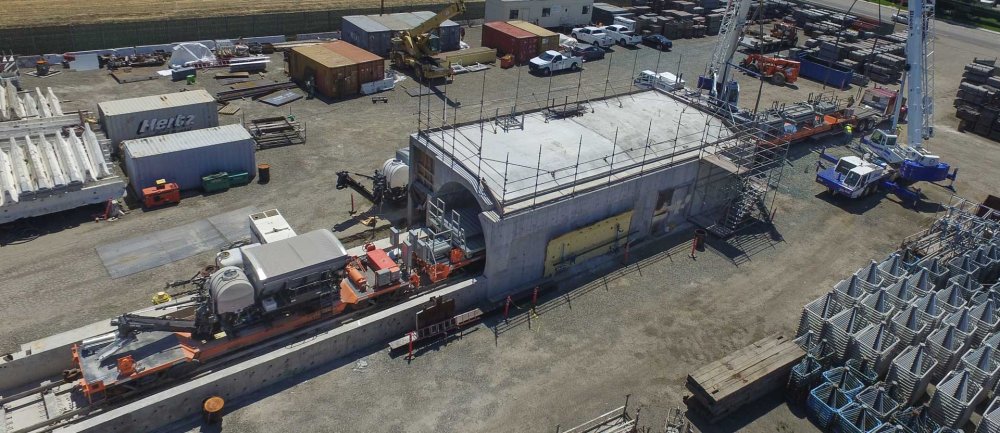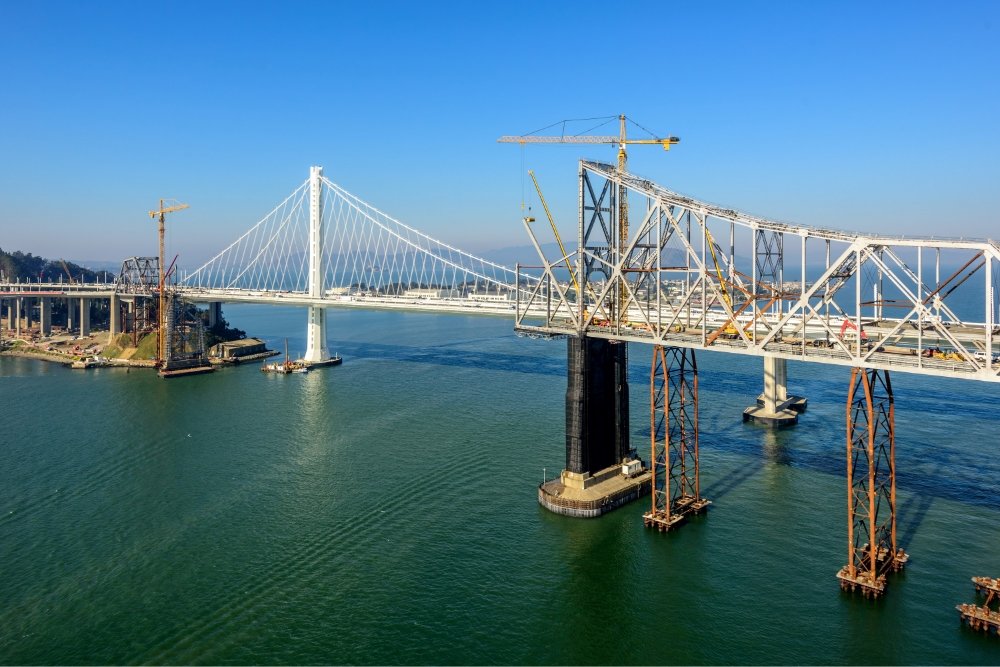« Back« PrevNext »

Bay Bridge Demo Project
During phase one, the original 1937 main cantilever span of the Bay Bridge was carefully disassembled in essentially the reverse order of the original construction.
All unnecessary weight was removed and recycled first. Massive jacks and added support members allowed the middle, suspended span, to be re-connected to the cantilever arms extending from each tower and pulled on to eliminate the stresses at the midpoint of the span. Careful monitoring and placement of removal equipment and temporary supports was constantly required as the removal of each section of the bridge created a complex new structure with shifting lines of forces that all had to be analyzed and accommodated.
The second phase of the Bay Bridge Demolition included the removal of five spans of 504 feet each and 14 spans of 288 feet each. Innovative dismantling plans were devised to avoid driving any piles into the shallow bay mud.
The longer truss spans were lowered onto pairs of barges on slender steel cables using strand jacks. To separate the trusses from the towers, the ends of the truss were refabricated, and the original ends cut off for clearance. The new ends to be supported by the cables were re-engineered (and portions of the truss reconfigured) to allow for stability as the shortened truss was lowered between the exiting towers.
The removal of the 288-foot spans utilized a unique 4-legged jacking system mounted on two linked barges. First, the spans were disconnected from the existing anchors on top of the towers. Next the jacking system raised the span enough to slide it transversely away from the support towers. Finally, once clear of the original alignment, the span was lowered to the deck of the barge for safe transport to the port of Oakland and dockside dismantling with shore and barge mounted cranes.







